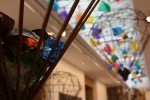My travels this summer were plagued by museums undergoing restoration (the Stedelijk and Rijksmuseum, Amsterdam and the Museum of Modern Art at Villeneuve d’Ascq, just outside Lille, with its great but little-known modernist collection) but a surprise was the new art facility created by the city of Lille last year at the 1861 cargo rail station, Gare Saint Sauveur. Franklin Azzi used a light touch in converting two buildings on the almost 4-square mile site into a multipurpose art center that is glamorous and up-to-date while acknowledging the buildings’ industrial past. There’s a huge exhibition space, a cafe looking onto an outdoor space where children play and sculpture can be sited, and facilities for showing films and performance events.
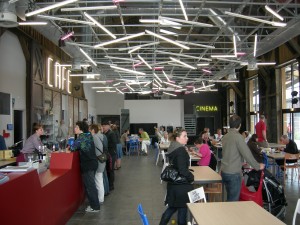
The exhibition occupying most of the space was Traffic Jam, an engaging and sprawling installation by Pascale Marthine Tayou. The artist from Cameroon darkened the cavernous space and used videos and lights within some pieces and spotlights for others. The effect was of wandering around a resort at night, with bright lights and color beckoning in every direction.
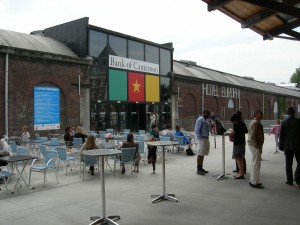
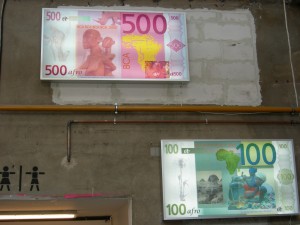
Tayou is a citizen of the world, as at home in Europe as in the rural and urban districts of Cameroon and beyond. The installation reflected the ironies, benefits and ills of a world in which ideas and goods travel plentifully, if unequally. It also indicated the artist’s thorough grounding in Western modernism, with references ranging from Brancusi to Nam June Paik. I recalled a comment of Paik’s to the effect that artists from poor countries can’t afford to be boring. Boring Tayou is not.
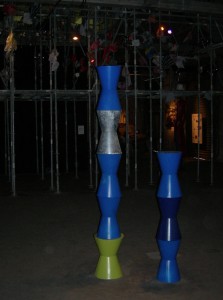
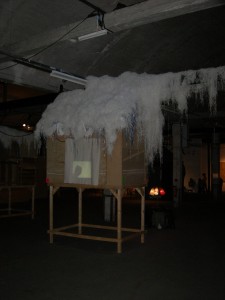
The ability to fill such a huge space effectively is certainly one measure of the artist’s ambition and abilities. Traffic Jam created an entire world out of sculpture, video, drawing, photography and installations large enough to enter. A group of huts projected videos of laborers in both the Northern and Southern hemispheres, from village weavers to the precise crafting of neon signage in the North. The artist surely intended the irony that even in the industrialized world glass technology has changed little since pre-history.
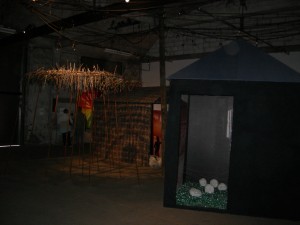
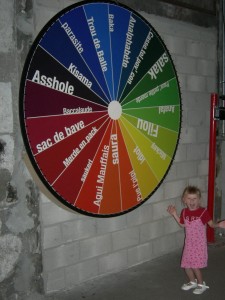
Materials throughout ranged from natural grasses to steel piping and lots and lots of plastic bags, while the techniques varied from traditional African weaving and crochet to video. Tayou employed the ingenuity and habitual recycling of the poor, turning refuse into celebratory creations. The Africans he portrayed in video, photography and sculpture showed a similar indiscriminate usage of the organic and industrial. They are well aware of the world beyond, rather more than many of us in the North.
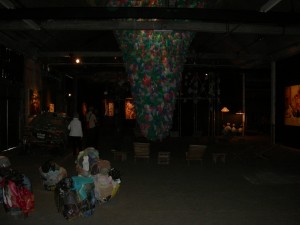
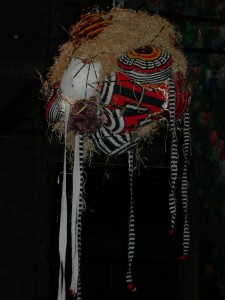
Tayou says of Le Grand Grenier, This piece is about consumption. For him the bags retain records of the goods that flow into Africa, and their countries of origin: Italy, China, Belgium, France. When the wind picks up, Tayou says of Plastic City, the whole installation comes to life … revealing an image of pollution and colonization.
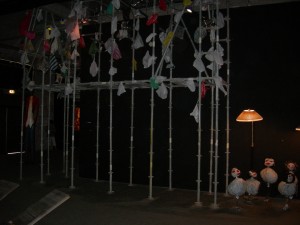
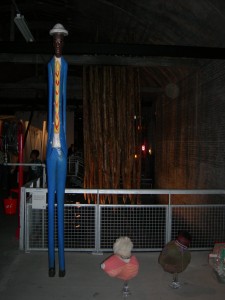
Wall Street is another ironic reference, to the wealth behind the neon signs that fill the streets of Cameroon, dangling an unobtainable world of Western consumerism before the local population which is more likely to receive the West’s surplus and waste. But Tayou’s work, while highly critical of industrial exploitation also shows a world of tradition and adaptation in his homeland, an ability to Africanize the foreign and to modernize in its own, local way. If the work were simply polemic it would have been unbearable. Traffic Jam was a bustling, complex reflection of the world Tayou sees, filled with exploitation but also with small children playing games and their elders using both local and foreign goods and ideas to establish their place in the world. Tayou is an ambassador of this complex, twenty-first-century Africa.
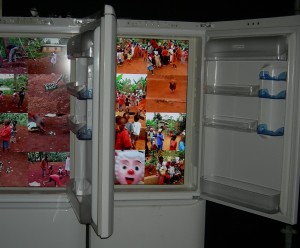
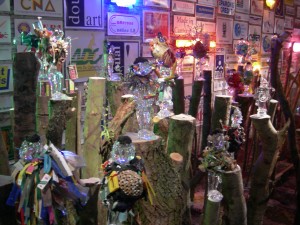
Tayou had a gallery exhibition in New York in 1999 and has been seen in various group exhibitions in the U.S., most recently at Prospect 1 (2008), New Orleans. It would be good to see more of his work in the U.S.


